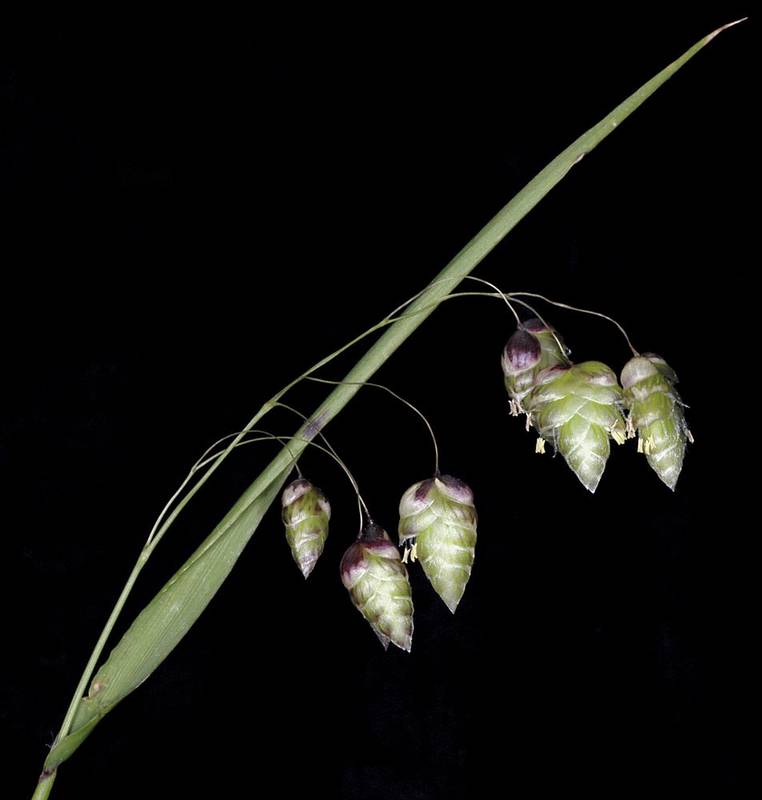Briza minor
Briza maxima
little quaking grass
big quakinggrass
Sheaths open; membranous ligule 1-4 mm. long;
blades flat, 2-8 mm. broad.
Inflorescence a pyramidal panicle 5-15 cm. long;
spikelets broadly triangular, 4- to 6-flowered;
glumes at right-angles to the rachilla, 2-2.5 mm. long, prow-like at the tip;
lemmas cordate-based, 2 mm. long and 1.5 mm. broad;
paleas shorter than the lemmas;
lodicules 2, lanceolate, 0.7 mm. long.
Utricle
Briza minor
Briza maxima
Well established in Eastern North America; occasional on the West coast.
Occurring west of the Cascades crest in Washington; southwestern British Columbia to California; also in the southwestern U.S. and northeastern North America.
- Local floras:
BC,
CA,
OR,
WA
- Local Web sites:
CalFlora,
CalPhotos,
Flora NW,
PNW Herbaria
WildflowerSearch
iNaturalist (observations)
USDA Plants Database
- LBJ Wildflower Center
- SEINet
- Plants of the World Online
- Encyclopedia of Life
- Wikipedia
- Google Image Search
- Local floras:
BC,
CA,
OR,
WA
- Local Web sites:
CalFlora,
CalPhotos,
Flora NW,
PNW Herbaria
WildflowerSearch
iNaturalist (observations)
USDA Plants Database
- LBJ Wildflower Center
- SEINet
- Plants of the World Online
- Encyclopedia of Life
- Wikipedia
- Google Image Search



